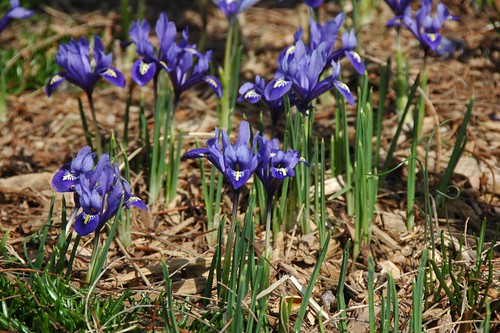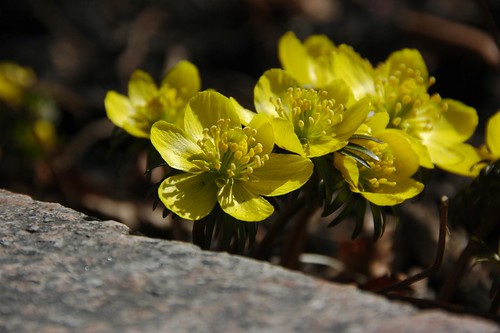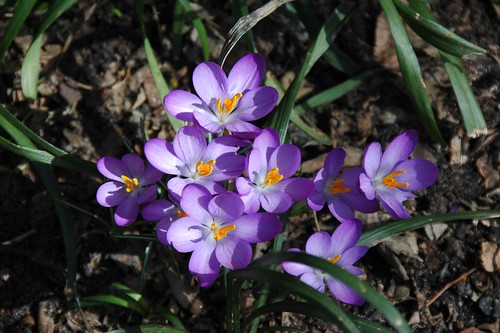.jpg)
“The Return of Persephone“, Frederic Leighton, 1896 (four years before his death)
The March Equinox – Spring or Vernal, in the Northern Hemisphere – occurs at 11:49 PM Eastern Daylight Time this evening. It’s the earliest it’s occurred in over a century. It seems fitting, given the warm, nearly snowless winter, and the quickened pace of everything else.
We are in the early stages of the COVID-19 pandemic. The disease is COVID: Corona Virus Disease. The virus that causes it is known as SARS-CoV2. At this time, New York state has 1/3 to 1/2 of all cases in the United States. That ratio has been increasing quickly over the past couple of days; it was 1/4 just a few days ago. As one would expect, New York City alone has most of those; 1/4 of all confirmed cases in the U.S. are in NYC at this moment.
Once again in my life, I am in the epicenter of an epidemic.
The changes to our daily routines have been rapid.
- I have been working from home for just over a week, enforced by my employer. At first it was just to the end of this week. Now it’s to the end of the month. I’m expecting it to last at least into the fall: at least 6 months.
- I have been going down to New Jersey every other week to help my sister take care of our elderly disabled mother. I had to call and cancel that indefinitely. Everyone in NYC must assume they have been exposed, if not infected. Any visit from me would be a risk to her life.
- My husband and I enjoyed brunch just last Saturday at our favorite place. All restaurants and bars are now closed.
- Theaters, museums, zoos, all closed.
Because of rapid changes such as these, it doesn’t feel early in all of this, but it is. The social marketing of social distancing – reducing contact, even indirectly, with others – has been somewhat effective. The streets are quiet. Mass transit ridership is down 40-90%.
Somewhat effective, but not enough. We are still in the exponential expansion of the disease. The number of cases is nearly doubling every two days. Humans’ brains don’t work well with exponentials. If there are 2,500 confirmed cases in NYC today, by this time next week, we should expect over 20,000; in 2 weeks, 170,000. The lack of testing compounds this. We are running blind, because we cannot stop. We must balance ignorance and risk.
This is unique in my lifetime. Yet there are touchpoints with other disasters and atrocities we’ve survived: 9/11, Sandy, AIDS. As bad as all those were, the worst of it was caused by people. I fear – I expect – the same to happen here. Only now, it’s a disease affecting everyone, not a dispensible, disposable community. And it’s everywhere, not just NYC, not just this country.
We are all about to undergo endurance trauma. This is not a singular event. It’s a marathon. It’s going to last through the summer, into the fall. Depending on how effective or ineffective we are at managing ourselves, this could extend into next summer.
Those who profit from fear want to divide us. What I am also seeing is mutual support, resiliency in community. After 9/11, people in NYC were kind to each other. That was when I changed my standard greeting of separation or departure, whether from a loved one or a bus driver, to “take care”. It remains always appropriate, and especially apt during times such as these.
Birds sing outside my porch. The succession of blooming trees has already begun. Life around us goes on without us. It is the only glimmer I can perceive this Spring of Persephone’s promise.
Related Content
Equinox
https://journeynorth.org/sunlight-seasons/news/spring-2020/03192020-tonight-spring-equinox
COVID-19
Social Distancing
https://medium.com/@ariadnelabs/social-distancing-this-is-not-a-snow-day-ac21d7fa78b4
https://socialdistancegame.com/
https://www.washingtonpost.com/graphics/2020/world/corona-simulator/
New York City
https://projects.thecity.nyc/2020_03_covid-19-tracker/
New York State
https://coronavirus.health.ny.gov/county-county-breakdown-positive-cases
United States
A live, continually updated version of the map above.
http://www.61n150w.com/COVID19Map.png
The data for the map comes from here:
https://www.worldometers.info/coronavirus/country/us/
For “reasons”, there’s little trustworthy federal information available. The CDC is still the official source of stats.
https://www.cdc.gov/coronavirus/2019-ncov/cases-updates/cases-in-us.html
Global
Global, and you can select a country, and drill-down to more local figures, e.g.: states for the U.S.
https://gisanddata.maps.arcgis.com/apps/opsdashboard/index.html#/bda7594740fd40299423467b48e9ecf6
This site has visualizations world-wide and by country, and you can download the data for your own analysis:
https://ourworldindata.org/coronavirus
Also allows you to drill down to country level.
https://www.worldometers.info/coronavirus/

















